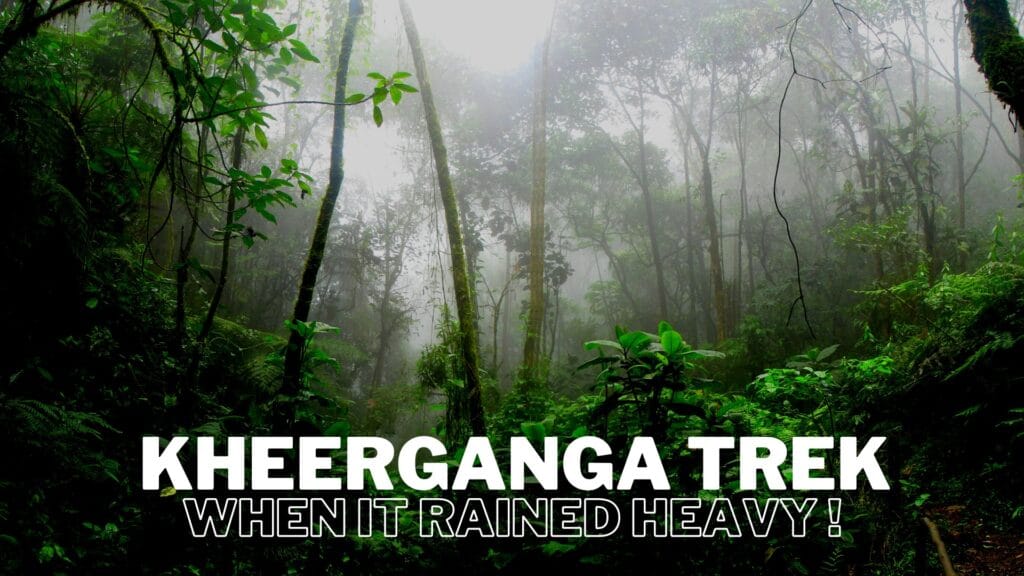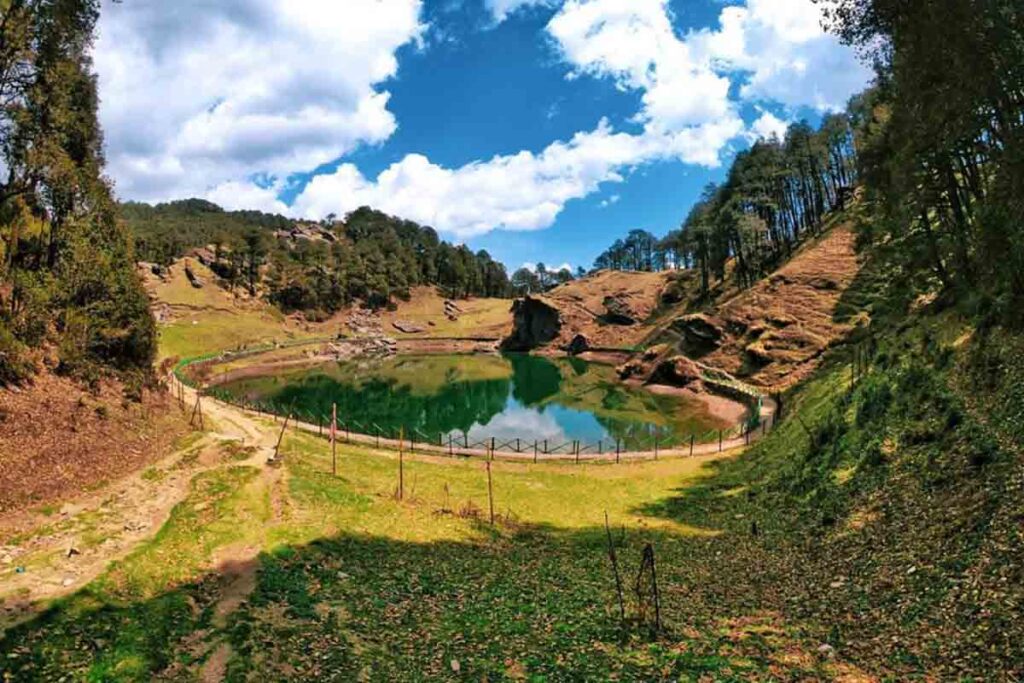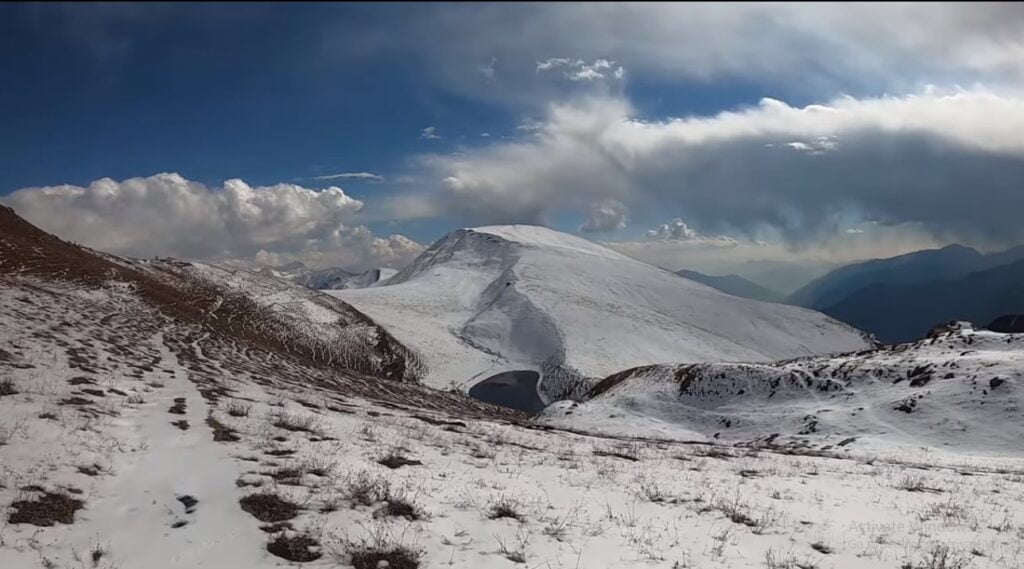Table of Contents
ToggleThe Parvati Valley in Kullu District, India
The Parvati Valley is one of the most picturesque regions of Himachal Pradesh. A thick alpine forest covers the entire valley, with the Parvati River flowing in the middle. The Parvati River ultimately meets the Beas River at Bhuntar. The Parvati Valley is famous for its hippie trail, the unique lifestyle and tradition of nearby villages, and astounding natural beauty. It is also believed that Lord Shiva, the destroyer meditated in these valleys for thousands of years. The valley is also famous for some of the most beautiful treks in Himachal Pradesh like Sar Pass Trek, Chanderkhani Trek, Mantalai Trek, Pin Parbati and Kheerganga Trek.
About Kheerganga Trek
Kheerganga trek in the Parvati Valley is an invigorating trekking experience, which not only unveils the stunning terrain of the Himalayas but also gives you a chance to see and observe the life and culture of the people living here. If you want there are plenty of villages to visit and infinite opportunities to click pictures with the snow-capped peaks in the background. The trek is 12 km long and takes about 6-8 hours to complete. The trail is well-marked and there are several campsites along the way. The trek is suitable for all fitness levels, but it is important to be prepared for high altitudes and cold temperatures.
Kheerganga Trek Itinerary
I had always wanted to do the Kheerganga trek and thanks to Thrillophilia I got this opportunity in April 2022. This is the Itinerary that I followed for my Kheerganga Trek
Day 1 : Took the 640 am flight and reached Bhuntar Airport at 0830 am. Then with rucksack on my back, I walked for sometime and reached the bridge and crossed over to the other side of the bridge and waited for the local bus. Reached Kasol comfortably and reported at the camp at 1130 hours.
Acclimatisation : The Chalal Trek
After lunch at around 230 pm we were taken for the Chalal Trek which was a sort of acclimatisation walk or trek. You cannot just land in Kasol and straightway go for the Kheerganga Trek. This acclimatisation walk is a must-do. The next day’s trek to Kheerganga is going to be much easier and more enjoyable.
Day 2. After breakfast, we took a shared taxi at 9 am and reached Barshaini after one hour’s drive. A brief intro about the trek was given by our trek leader Shri Dhruv. We were also required to fill an “Indemnity Bond” which exempts the company from any damages or liabilities in case of accidents/ calamities etc.
Barshaini Start of Kheerganga Trek
The thrilling Kheerganga trek began from the small village of Barshaini, situated on the banks of the serene Parvati River. After walking for a km or so we crossed a bridge on the river Parvati and reached the other side of the Valley. It is from here that the actual climb begins. The entire stretch of the trekking trail was through dense alpine forest and what a treat to behold those majestic sights of nature. There are a number of small tented cafes and restaurants where one can have tea, coffee, toast, eggs, maggie, and such stuff though the cost is a bit on the higher side.
The halt for the lunch point is at a beautiful place where there are again a number of cafes. There is also a stream flowing which gives the entire place a nice look. After lunch as soon as we got up to continue the trek, there was a heavy downpour and we had to halt for more than an hour. The rain subsided but it was still drizzling. If we don’t move now it will soon be dark. With that in mind, we pushed on.
Kheerganga Difficulty Level
We were told by our trek leader Dhruv that the hardest climb is the stretch which is just before one reaches the campsite of Kheerganga. It was a bit hard, with the ground below you slippery and darkness engulfing slowly. Finally after climbing a ridge lo and behold the beautiful sight of the Kheerganga Campsite. By the time I reached the Red Rose Camp, I was soaked in rain. A comfortable large alpine tent was allotted to me and later on, dinner was served in one of the tents. In spite of the inclement weather, the food served was delicious and hot. Imagine hot chapatis and rice at this altitude.
A Night Under the Stars
Reaching the Kheerganga campsite was a surreal experience. The wooden huts, nestled amidst the snow-clad peaks, offered a cozy retreat. And the highlight of the trip? The natural hot springs. After a long day of trekking, soaking in these mineral-rich waters was pure bliss.
As night fell, the sky transformed into a celestial canvas, dotted with countless stars. The silence was profound, broken only by the crackling of the bonfire and the distant howl of a wolf. It was a moment of pure tranquillity, a moment I’ll cherish forever.
Return Trip Kheerganga to Kasol
Day 3. Woke up to clear weather with a blue sky. The mountain tops were covered with snow. Time to take a dip in the hot sulphur spring. After the refreshing bath and breakfast, it was time for the return trip to Barshaini and thence on to Kasol. On the way booked the 2230 bus for Delhi from Kasol. The adventure does not stop until you reach your home. The Kheerganga Trek was smooth, enjoyable and memorable.
Kheerganga Waterfall
There are a number of waterfalls while doing the Kheerganga Trek. The main kheerganga waterfall is the Rudranag Devta Waterfall. This is an amazing waterfall and a must-visit place while doing this trek. Spend some time at this beautiful location, and visit the Rudranag temple. Perfect place for photography.
Kheerganga Trek Best Time
The best time to visit Kheerganga is from March to June. This is the safest time and the weather in these months is also pleasant and cool, perfect for an adventure. The trek can however be done in other months however it is advisable to avoid this place during July to September when it rains. Those who want to see snowfall can do the trek in January and early February.
Kheerganga Trek Weather and Temperature
Kheerganga Trek: The Best Time to Go
The ideal time to embark on the Kheerganga trek is during the shoulder seasons – March to June and September to mid-November.
Summer (March-June):
Pleasant Weather: Temperatures range from a comfortable 13°C to a warm 37°C.
Clear Skies: Enjoy stunning panoramic views of the Himalayas.
Wildlife Spotting: This is the best time to catch glimpses of elusive wildlife like Himalayan bears and leopards.
Autumn (September-Mid-November):
Crisp Air: Experience the beauty of the valley as the leaves turn golden.
Serene Atmosphere: Fewer crowds and a peaceful ambiance.
Stunning Landscapes: Witness the breathtaking beauty of the snow-capped peaks.
Avoid the Monsoon:
The monsoon season (July-August) brings heavy rainfall and landslides, making the trek hazardous and often impassable.
Tips for Your Kheerganga Trek
Best Time to Visit: March to June is the ideal time to trek, when the weather is pleasant and the trails are clear.
Physical Fitness: While the trek is doable for most people, a moderate level of fitness is recommended.
Packing Essentials: Comfortable trekking shoes, warm clothing, a waterproof jacket, a headlamp, and a first-aid kit are must-haves.
Hydration and Nutrition: Stay hydrated by drinking plenty of water, and fuel your body with energy-rich snacks.
Respect the Environment: Leave no trace. Pack out all your trash and avoid littering. Also, respect local culture and beliefs. Do not enter their temples uninvited or wearing any leather items.
To Conclude – Journey of a Lifetime
The Kheerganga trek is more than just a physical challenge; it’s a spiritual journey. It’s a chance to connect with nature, push your limits, and discover the beauty of the Himalayas. If you’re seeking an adventure that will leave you breathless, I highly recommend this unforgettable trek.
You might like to read ..
How to Reach Kasol from Delhi
For the Kheerganga Trek, one has to reach Kasol which serves as the base camp for the Kheerganga Trek. There are several modes of travel viz driving your own car, coming by bus or air travel. If driving your own vehicle is not your cup of tea then the most popular mode of transportation is travel by bus. There are a few flights as well that connect Delhi to Kullu. Another option is hiring a taxi which for such a long journey I usually don’t prefer.
Driving Your Vehicle
It takes approximately 10 to 12 hours to drive from Delhi to Kasol to cover a distance of 490 km if you are driving your own vehicle. The route is Delhi to Chandigarh, Roopnagar, Kiratpur Sahib, then bypassing Bilaspur via the new four-lane expressway one reaches Sundernagar, Mandi and Bhuntar. From Bhuntar instead of going towards Kullu or Manali, you have to turn right towards the source of Parvati river. The distance from Bhuntar to Kasol is only 25 km. Though driving in Himachal is a bit tiring passing through picturesque places, stopping at anywhere on the road to enjoy the beautiful sceneries makes it worthwhile. If you are travelling from Chandigarh the distance from there to Kasol is 330 km approx.
Buses the Best Option
There are scores of companies operating buses to Kasol. You can take a bus from ISBT Kashmiri Gate, New Delhi. Most of the buses are for Manali; you can buy a ticket up to Bhuntar and from there take another local bus for Kasol. One easy option is booking through apps like Redbus or Intercity.
Flights
The quickest way to reach Kasol from Delhi is by taking a flight to Bhuntar airport and from there either take a taxi or bus to reach Kasol. The number of flights is limited and also a bit costly as well.



